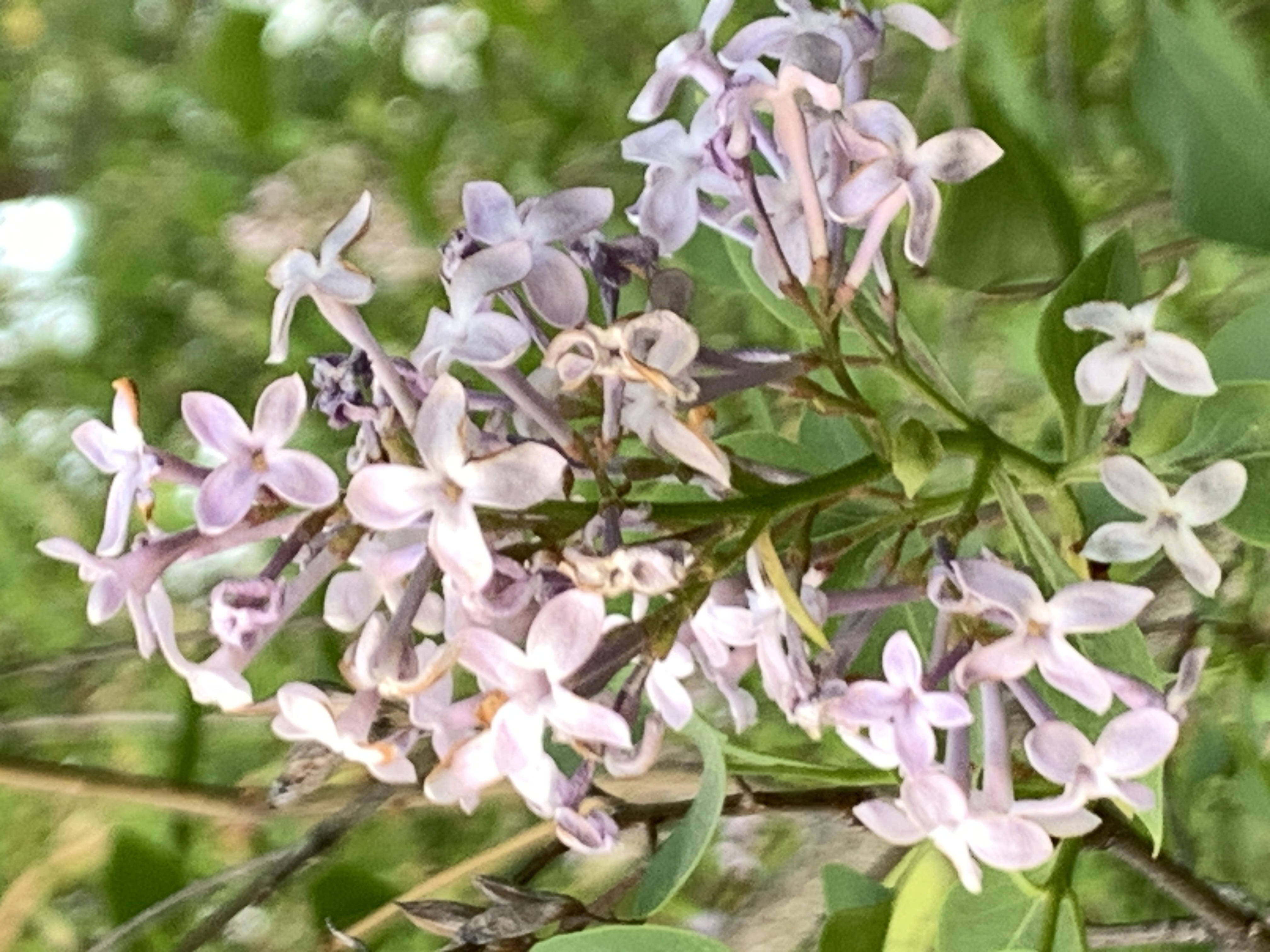When I was a kid, we had a big lilac bush in the corner of the yard. You could crawl into that bush and hide. You could be just about guaranteed to get ticks in your hair if you did, though. Every spring around Mother’s Day, that bush would burst into purple booms that smelled divine. Mom would send us out to pick some which she would arrange in vases, making the whole house smell like lilacs. I tried growing lilacs in other places I’ve lived, but they never took hold. They’re supposed to be really easy to grow, so when I moved to Owl Acres, I planted three bushes along the driveway and, wonder of wonders, they did take hold. Unfortunately they’ve been neglected over the years, but still they will provide those beautiful, fragrant spring-affirming flowers. They just need some TLC.
Lilacs have been favorites of Americans in the New World since the early 1700s. Immigrants brought seeds or cuttings from Europe to plant near the doors of their homes to welcome visitors. George Washington and Thomas Jefferson both wrote about planting them in their gardens.
There are over 20 species of lilacs, most of which originated in Asia. The ones growing on Owl Acres are the common lilac, (Syringa vulgaris). Common lilacs originated in Eastern Europe and for centuries were prized and cultivated throughout northern Europe, especially France.
Lilacs are cold-weather plants. They need a period of 40 to 60 days of dormancy over the winter when it’s below freezing or they won’t flower. They form their flower buds in the summer to bloom the next spring. They also like plenty of sun. Once established, lilacs can live for over 100 years.
Lilacs grow as a multi-stemmed shrub. If left to their own devices, like ours have been, they grow leggy and tall, and eventually the flowers, which should be about face level, end up only at the top of the shrub. The individual flowers are tube-shaped with four petals around the edge. They hang in six-to-eight-inch cone-shaped clusters or panicles among heart-shaped leaves. In the fall, this year’s flowers will set seeds which persist to feed the birds into the winter.

Three rangy and somewhat unlovely shrubs in a green yard with blue sky and white clouds. A red house with white porch railings is in the right background. If you look close, you’ll see Karen on the porch, supervising the creation of this photo. The lilacs on Owl Acres need some TLC.
The legend of the lilac goes back to Greek mythology. Pan was the lecherous god of shepherds, goatherds, and nature in general. He’s usually depicted with the horns, back legs and tail of a goat. One day he saw Syringa, a beautiful nymph, playing in the forest. He wanted her, so started chasing her. To hide from him, she turned herself into a lilac bush. Pan didn’t find her, but he found the lilac bush and made his first pan pipes out of its stems. (The inside of the lilac branch has a pithy center that can be removed to make a pipe.)
Lilacs are a member of the olive family, and as such fall prey to the same pests that other members battle. Powdery mildew usually won’t kill them, but it disfigures the leaves. The lilac/ash borer is a moth (not to be confused with the Emerald Ash Borer, which is a beetle). Its larvae hatch on the lilac and tunnel through the wood, weakening the tree. When the moth exits its cocoon, it looks and acts a lot like a paper wasp, and birds leave it alone. Unlike the majority of moths, this one flies during the day. It’s little for a moth, only about an inch long with a wing span of about an inch to an inch and a half.
Lilac blossoms are edible, and people have used them to infuse floral scents into syrup, jelly and ice cream. They also decorate a salad but can be a bit astringent. Medicinal uses of lilac cover about everything and are just good for what ails you. according to some herbalists.
I don’t think I’ll be eating my lilac flowers any time soon, but we have made a plan to rejuvenate our scraggly bushes after they flower this spring and before they develop next year’s buds.
Photos by Author. Feature photo alt text: Light purple, 4-petaled flowers grow in a cluster among green foliage in a close-up image of lilacs on Owl Acres.
